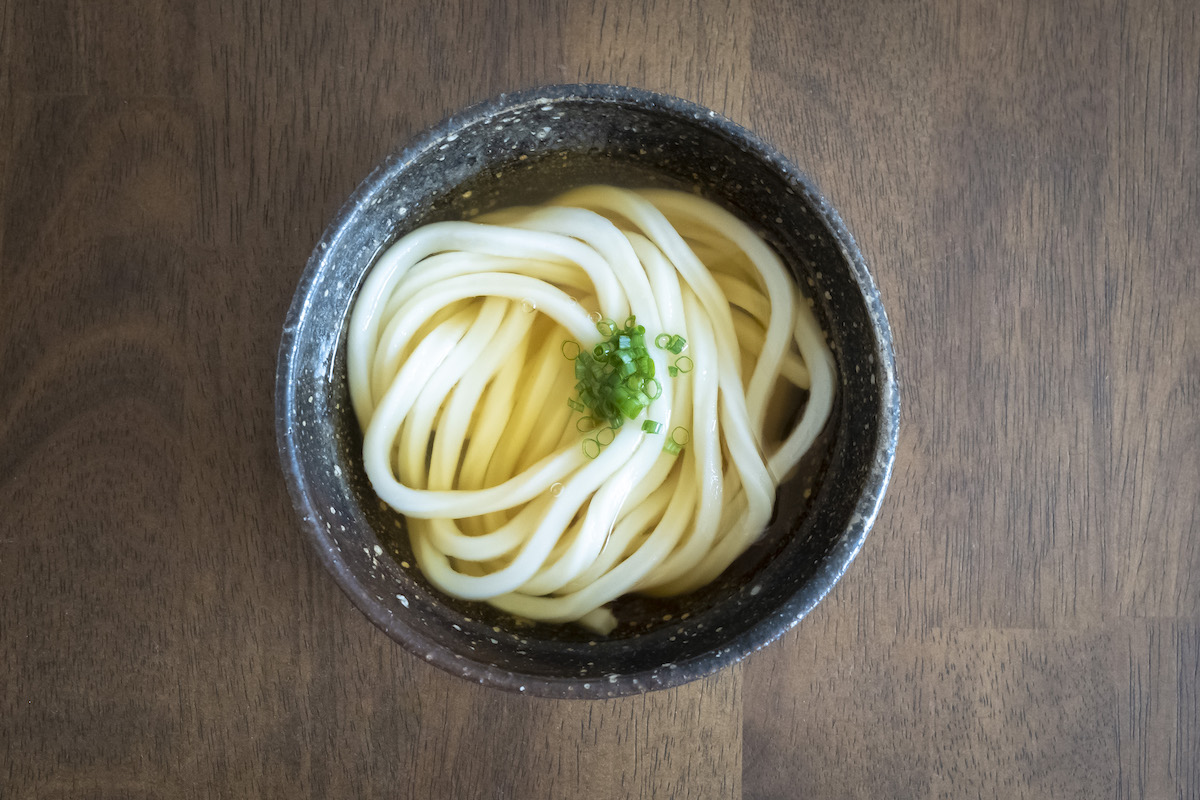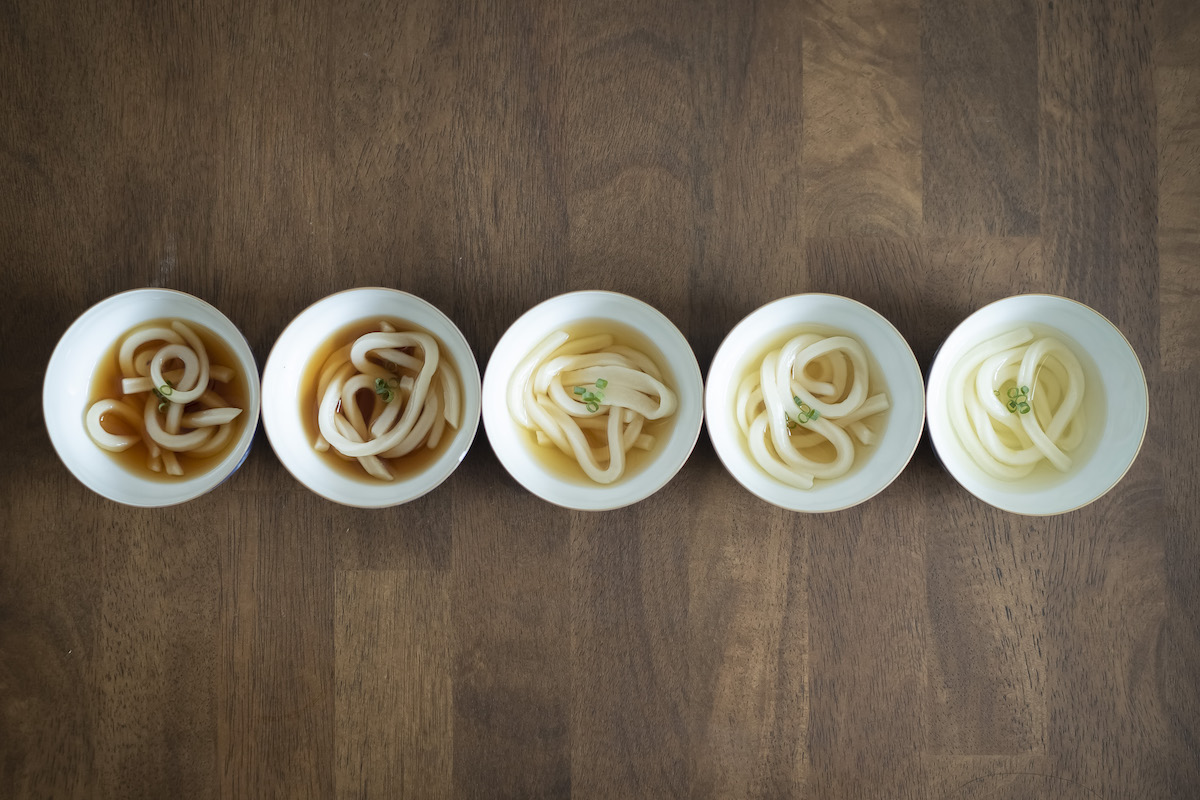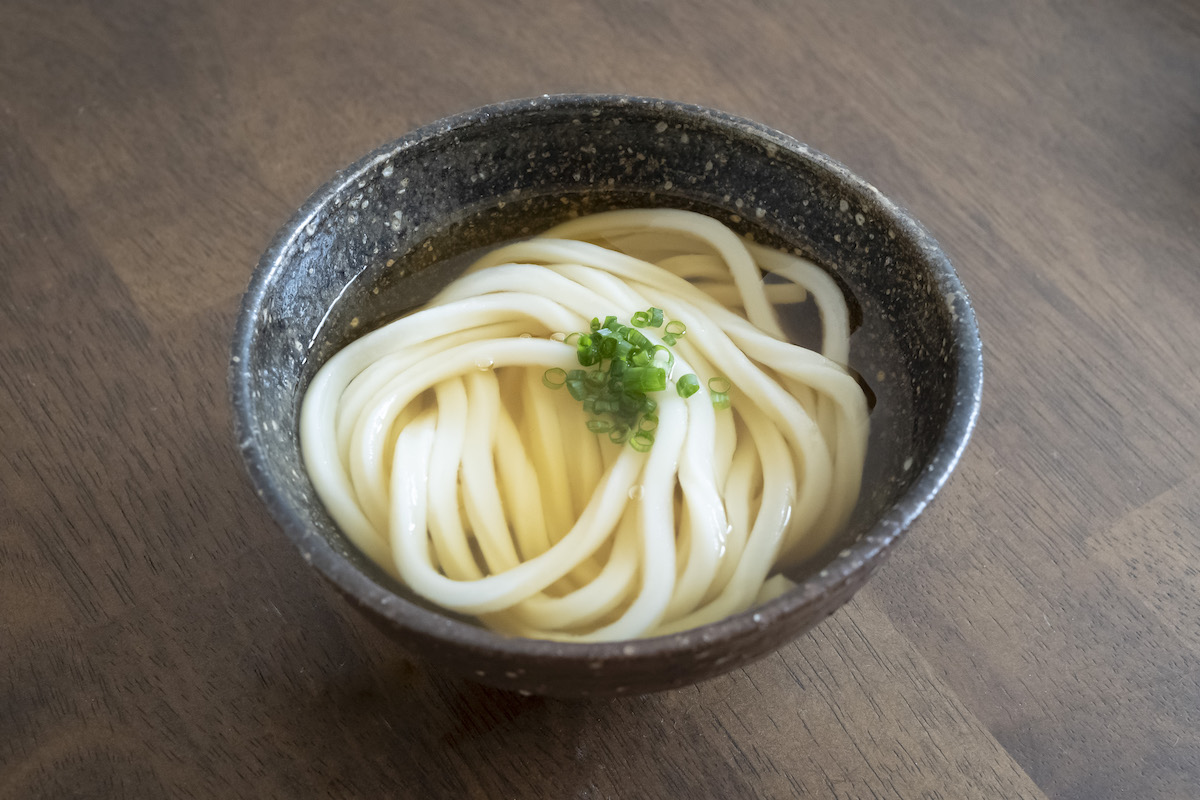Kake Udon
Last October, American food professionals visited fermented food producers to deepen their knowledge of Japanese fermentation culture during the “Hakko Tourism in Japan” tour campaign. As part of the tour, organizers held a tasting session where guests gave candid advice from the perspective of the American market to food product manufacturers looking to enter the United States market.
Although the term “fast food” may be perceived as a recent phenomenon, udon has a long history and has been loved by people throughout Japan, including Kagawa Prefecture, for more than 1,000 years. Furthermore, while the term “udon” is often used on its own, the noodle is served in a variety of ways, such as bukkake udon, kama-age udon, and zaru udon. It is sometimes served in a Western style nowadays, but kake udon remains at the top of the leader board. It is the most orthodox way to enjoy udon in Japan.

Serving: 1
Ingredients for Kake Soup
- 1 packet (about 200g) udon noodles
Broth
- 200ml dashi (Japanese soup stock)
- 1 ½ tablespoons soy sauce
- 1 ½ tablespoons mirin
- 2 tablespoons sake
- ⅓ teaspoon salt
- Condiments of your choice (green onions, ginger etc.)
- Toppings of your choice such as wakame seaweed, tenkasu (crunchy bits of tempura batter), kamaboko (Japanese fish cake), aburaage (deep-fried thin tofu pouches), tempura, etc.
Directions
- Add dashi of your choice, soy sauce, mirin, sake, and salt to a pot, and bring to a boil.
- Prepare toppings (To keep things simple, I prepared only green onions this time).
- Add the udon noodles to a pot of boiling water and cook until the noodles are tender. If you are using frozen or pre-boiled udon noodles, warm them up in the microwave.
- Add the cooked udon noodles and hot broth to a bowl, garnish with condiments and toppings of your choice, and the dish is ready to eat.
Taste Comparison

Shiro soy sauce (lightest color with a touch of sweetness)
Usukuchi soy sauce (subdued color and aroma with a salty taste)
Koikuchi soy sauce (king of soy sauce, good balance of the five flavors)
Sai-shikomi sauce (twice the brewing period and quantity of ingredients of koikuchi soy sauce)
Tamari soy sauce (soybeans as the main ingredient, characterized by its deep flavor)

For More Recipes
Keiko Kuroshima, the world's first soy sauce sommelier and certified sensory inspector, hails from Japan's soy sauce production hub in Shodoshima. She co-authored a book on the island's breweries and is the only female among the three soy sauce sommeliers worldwide. Her expertise and passion elevate soy sauce appreciation globally.

